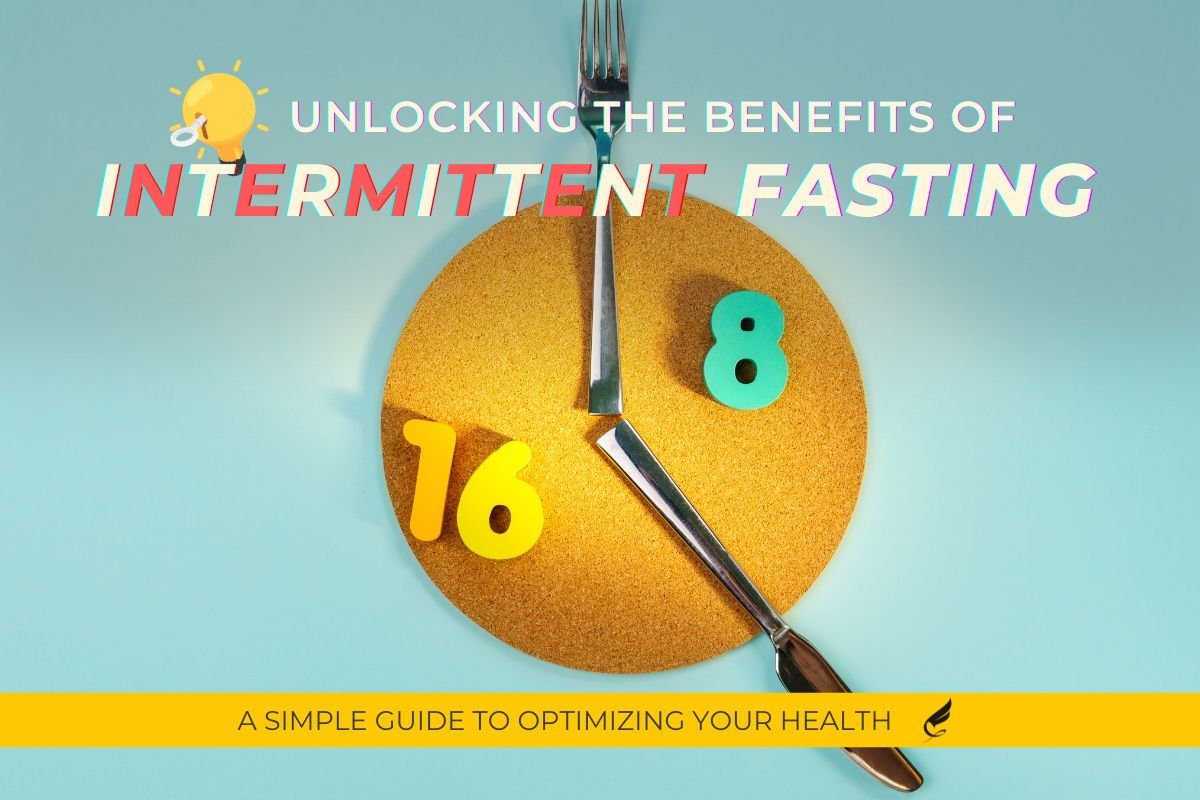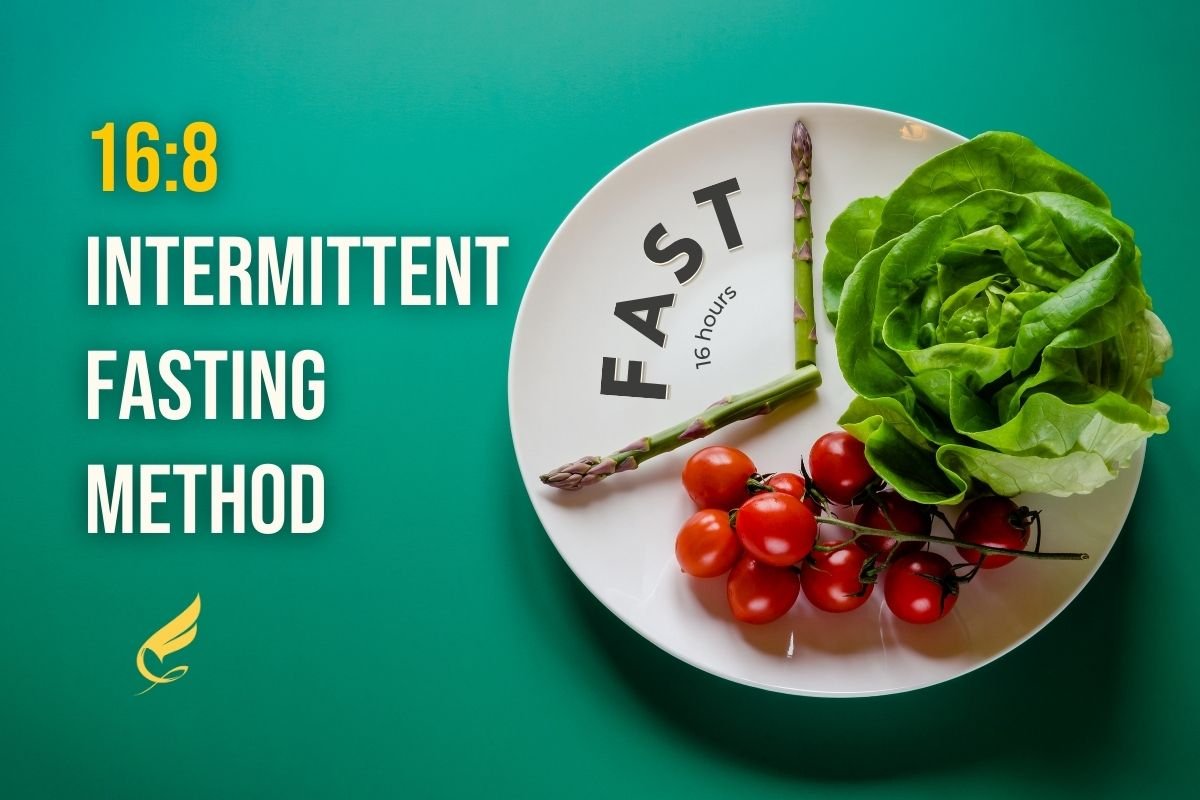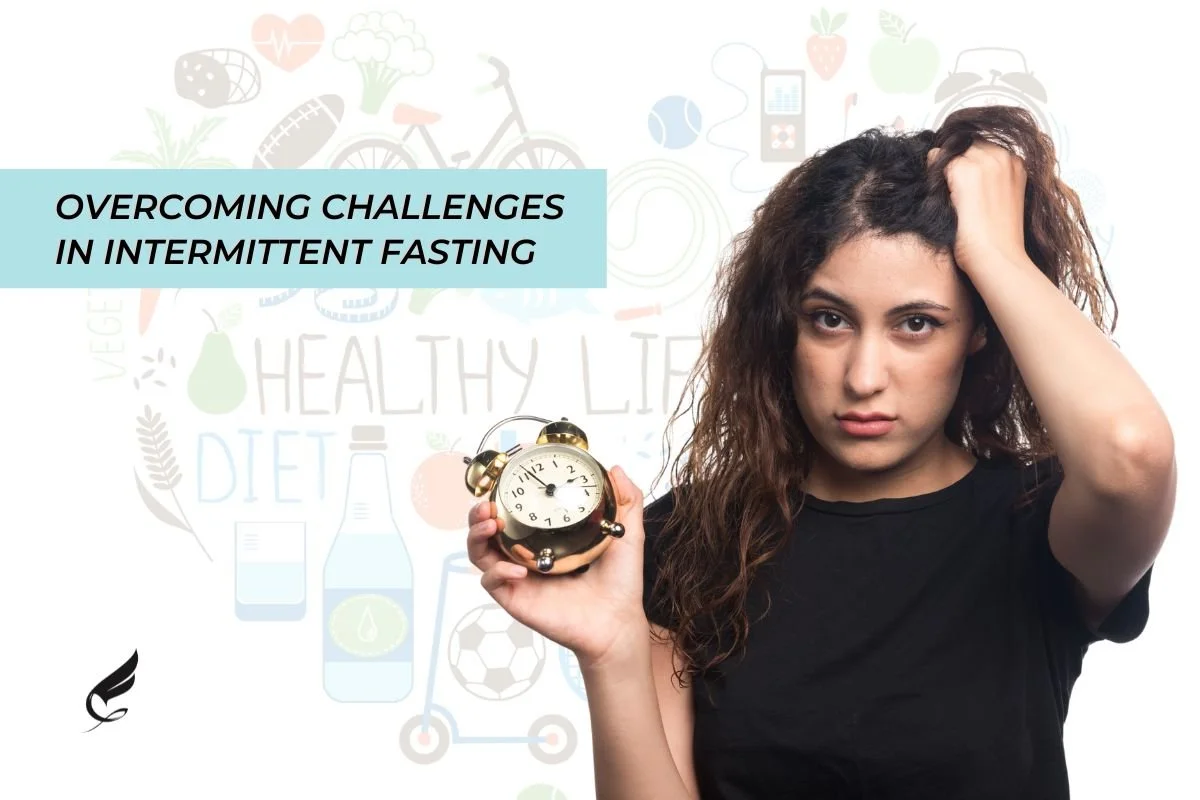Unlocking the Benefits of Intermittent Fasting 16 8: A Simple Guide to Optimizing Your Health
Do you want to improve your overall wellbeing and shed those extra pounds? If so, then Intermittent Fasting 16 8 is the perfect approach for you. With this comprehensive guide, we’ll take a deep dive into how this powerful yet uncomplicated fasting technique can optimize both health and physique. You’ll learn all about it through scientific research-supported evidence plus know exactly what steps to follow in order to make intermittent fasting work effectively for you!
Key Takeaways
16:8 Intermittent Fasting is a popular and effective approach to weight loss & health improvement, involving fasting for 16 hours each day.
Research suggests it can lead to various benefits such as improved metabolism, blood sugar control & reduced risk of obesity/diabetes/heart disease.
Maximizing the benefits requires exercise, monitoring progress and listening to your body’s signals.
Understanding the 16:8 Intermittent Fasting Method
Time restricted eating, or 16:8 Intermittent Fasting as it is also known, is becoming a popular and beneficial way to both reduce weight and benefit overall health. This approach involves fasting for 16 hours per day while only having an 8 hour window in which you can eat. This encourages conscious consumption with potential rewards such as improved blood sugar levels and fat loss.
During the specified feeding period one should focus on consuming healthy food including wholegrains, vegetables like leafy greens, plus fats that are beneficial for your wellness. All of these constitute part of a balanced diet necessary to obtain the desired results from intermittent fasting. So what makes this time-restricted style work? Well when done correctly, benefits will come through better management of sugars in the bloodstream along with reduced bodyweight by burning more calories than consumed!
The 16-hour fasting window
For 16 hours, you are only allowed to consume water, black coffee or tea without any calories. Keeping yourself hydrated with these zero-calorie drinks can help manage hunger pangs and also provide some benefits like reducing weight loss efforts by boosting insulin sensitivity levels. Besides that, it may improve blood sugar control and reduce inflammation while promoting longevity as well. During this fasting period your body experiences a reduction in its insulin level which could facilitate the process of avoiding gaining extra kilos along with losing existing ones from one’s own frame successfully maintaining optimal bodyweight goals.
The 8-hour eating window
The 8-hour eating window is the ideal timeframe for consuming all of your meals and snacks. Eating foods like leafy greens, lean proteins, healthy fats and whole grains will give you a nutritious diet that offers numerous benefits from intermittent fasting. The timing can be changed to suit individual needs. Common examples include 12 pm (8 pm or 1 pm) 9 pm, which still maximise the advantages gained by following an intermittent fasting lifestyle plan.
The Science Behind 16:8 Intermittent Fasting
Intermittent Fasting has a lot of potential benefits that have been backed up by scientific research, like weight loss, improved metabolism and control over blood sugar. The 16:8 Intermittent Fast specifically triggers the burning of fat by depleting available stores of glucose in an effective manner - leading to multiple health advantages such as obesity management or assistance with diabetes, heart disease or cancer and certain neurological disorders. This is why it’s becoming so popular. Its effectiveness was even highlighted in The New England Journal Of Medicine recently! With all this promising evidence surrounding intermittent fasting, it’s no wonder we keep seeing more people turning towards using the 16 8 fast for their wellness journey.
Weight loss and metabolism
Intermittent fasting has been shown to help with weight loss and higher metabolic rate, achieved mainly through the reduction of calorie intake. The 16:8 method limits meals within an 8 hour window - resulting in fewer overall calories consumed leading to a decrease in bodyweight. According to 13 studies reviewed, 11 had significant outcomes on participants.
Aside from reduced weight, this kind of intermittent fasting can also lower LDL cholesterol concentrations as well as triglyceride levels, which demonstrate healthier metabolism activity.
Blood sugar and insulin sensitivity
Studies have shown that 16:8 Intermittent Fasting can improve insulin sensitivity and blood sugar control, resulting in reduced levels of glucose, which provides a protective measure against diabetes. This form of fasting has been demonstrated to boost the body’s ability to process insulin more efficiently, as well as lessen its concentration while also stabilizing overall concentrations within the bloodstream, all crucial steps for successful prevention or management strategies when it comes to this condition. As such, 16:8 intermittent fasting appears highly promising as an alternative approach towards bettering glycemic regulation over time.
Blood pressure and underlying health conditions
16:8 Intermittent Fasting can have a profound impact on blood pressure and underlying health conditions. Studies indicate that this method of fasting can help lower blood pressure, reducing the risk of heart disease and stroke. This is particularly beneficial for individuals with hypertension or other cardiovascular conditions. Moreover, by promoting a balanced diet and healthy lifestyle, intermittent fasting can also help manage or prevent various underlying health conditions. However, it's important to note that those with low blood pressure or other specific health risk factors should consult with a healthcare provider before beginning a fasting regimen, as adjustments may be required to ensure safety and effectiveness.
Are you someone who needs help curating a nutrition plan that is effective? If YES, then please check out our Nutrition Coaching services.
Getting Started with 16:8 Intermittent Fasting
Beginning a 16:8 Intermittent Fasting routine is simple. First, pick an eating window suitable to your everyday life and plan out nutritional dishes. Also make sure you keep hydrated during fasting times if you have any underlying health concerns.
To better guide those looking for healthier habits while keeping key words such as intermittent fasting, the sixteen-eight method of IF and periods without food in mind - we’ll look into this process that can help provide improved lifestyle outcomes, especially for individuals dealing with medical issues related to health conditions or illnesses they may be experiencing.
Choosing your eating window
Finding the right eating window for 16:8 Intermittent Fasting is an important part of reaping its benefits. Be sure to take into consideration your daily routine, including work hours, sleep habits and exercise regimen when selecting yours. If social events or dining out arise, you can still adjust this schedule while preserving intermittent fasting’s advantages.
It’s essential that consistency be maintained with 16:8 Intermittent Fasting in order for it to yield results. So choosing a plan tailored specifically to your lifestyle will help bring about successful outcomes!
Planning nutritious meals
During the eating window, focus on whole foods full of nutrients for maximum health gains. Try to prioritize unprocessed items like lean proteins, healthy fats, and complex carbohydrates such as meat, fish, vegetables, fruit legumes and whole grains in order to gain energy levels that support weight loss objectives and enhance overall wellbeing.
Staying hydrated
Maintaining proper hydration is essential, so drinking water during your fasts can help reduce hunger and prevent dehydration-related discomfort. Opt for unsweetened teas or coffees to stay satiated without consuming many calories when fasting periods occur. These beverages contain fewer calories than their sweet counterparts, making them beneficial in controlling appetite as you follow a fasting program.
Potential Challenges and Solutions
Intermittent fasting with a 16:8 schedule can bring several health benefits, but to take full advantage of it one must learn how to manage hunger and social situations as well as maintain energy levels. Having control over these common hurdles will enable you the best opportunity for success when it comes to this type of fasting regime.
Managing hunger
To stave off hunger, it’s important to stay hydrated and consume foods high in fiber. Eating whole grains, legumes, vegetables, and fruits can help curb cravings during fasting times since these items provide a feeling of satiety for longer periods. Mindful eating is recommended: pay attention to the texture and flavor while focusing on body signals so you don’t overindulge or lead into an unhealthy relationship with food like developing disordered behaviors around meals.
Social situations
Intermittent fasting allows you to customize your diet around your social life while still enjoying its rewards. To make this possible, take the time to strategize and plan ahead. Adjust eating patterns or incorporate occasional wiggle room into them. Keep friends and family in the loop regarding dietary choices, as well as how intermittent fasting works for you – doing so will help ensure that they are on board with what you’re up to!
Maintaining energy levels
Maintaining energy levels while practicing intermittent fasting is achievable by consuming nutrient-rich meals in an eating window and getting sufficient rest. Partaking in physical activities during the fast will also help to sustain energy, so as to make this type of dieting successful. To optimize well-being throughout it all, establishing good sleeping habits are paramount for a steady flow of vigor - which can even exceed pre-fasted status if done correctly.
Who Should and Shouldn't Try 16:8 Intermittent Fasting
Intermittent Fasting 16:8 has become increasingly popular among healthy adults as a means for weight loss and overall health improvements. This type of fasting schedule isn’t suitable for everybody, so we will explore who may find it advantageous compared to those who should stay away from the program.
The keywords here are important - intermittent fasting with an emphasis on 16 8 eating plan – in order to understand which individuals can benefit and reap the desired results while avoiding any potential drawbacks.
Suitable candidates
Intermittent fasting, in particular the 16:8 method, can help adults with type 2 diabetes realize some beneficial effects. Weight loss and improved control of blood pressure and sugar levels may be possible outcomes from this approach, which could lead to Health improvements for eligible individuals.
Unsuitable candidates
Intermittent fasting, specifically the 16:8 plan, should not be practiced by pregnant or breastfeeding individuals with a background of disordered eating as well as those living with type 1 diabetes. During pregnancy and lactation, both mommy and baby may suffer from restricted fluid/food intakes which could create harm. While for people who have T1D their blood sugar levels could be thrown out of balance due to changes in insulin requirements during intermittent fasting spells, this can become dangerous too!
Maximizing the Benefits of 16:8 Intermittent Fasting
By engaging in physical exercise, tracking progress and paying attention to body signals during your 16:8 Intermittent Fasting routine you can take advantage of the potential benefits it offers. This approach will assist with achieving optimal results, maximizing what this method has to offer.
Combining with exercise
When it comes to 16:8 intermittent fasting and weight loss, a good approach is to do aerobic exercise such as walking, running, cycling or yoga before eating within the window of time. This can help enhance fat burning during the fasting period. Performing some resistance training has been shown to be beneficial in order for one’s body to burn more calories while practicing this kind of fasting strategy.
To find out more about our personal training and body transformation services check out:
Monitoring progress
Regularly evaluating your weight, composition of the body, and blood sugar levels is essential to confirm that intermittent fasting works for you. Apps like Zero, MyFitnessPal or Ate Food Diary will help with monitoring hours spent fasting as well as logging meals consumed and can provide helpful advice in order to make sure this method brings good results.
Listening to your body
It is important to take notice of your physical and mental hunger cues in order to get the best out of 16:8 Intermittent Fasting. By evaluating and classifying which type of cravings you are experiencing (physical/emotional) you can address the underlying cause for non-physiological appetite.
Paying attention, so as to be able to respond accordingly with adequate changes such as adjustments in fasting plan or dieting habits, allows for a successful intermittent fasting journey ultimately achieving desired outcomes!
Summary
Adhering to the 16:8 Intermittent Fasting schedule and providing your body with nutritious foods can lead to significant potential benefits in weight loss and overall health. By attempting this fasting method, you’ll likely discover a healthier, happier version of yourself!
To find out more about other types of diets, dieting approaches, and tips, check out:
Frequently Asked Questions
Does 16 8 intermittent fasting really work?
Research indicates that engaging in a 16:8 time restricted eating routine can help improve blood sugar levels, lower blood pressure and may even extend life expectancy. This form of eating is also known to cause weight loss without any major adverse events when coupled with healthy nutrition habits and an active lifestyle. However to lose weight one must ensure a state of energy deficiency, which means that one must consume less calories than they burn during daily activity.
Intermittent fasting has been found beneficial for those seeking better control over their glycaemic levels as well as decreased hypertension. Thus being potentially beneficial to longevity overall due to its observed ability to promote this type of health outcomes with minimal risk.
What is the 16 8 method?
The 16:8 intermittent fasting method is a form of time-restricted fasting that involves fasting for up to sixteen hours, followed by an eight hour period in which food consumption is allowed. This practice can be incorporated into a caloric deficit program and still promote weight loss and burn fat if done properly as its own measure.
What does 16 8 mean in if?
Intermittent fasting - specifically 16:8 intermittent fasting - is a form of time-restricted eating where an individual eats only within an 8-hour window and fasts for the other remaining hours in each 24 hour period.
What can I eat during 16 8 intermittent fasting?
When practicing intermittent fasting, make sure to stay hydrated by drinking plenty of water and focus on consuming nutrient-rich foods like lean proteins, whole grains, fruits, veggies with healthy fats within the allotted eating window. Fiber-dense and high protein items are highly recommended. If hunger arises between meals, don’t hesitate to gulp down a glass of H2O first!
How do I choose the best eating window for 16:8 Intermittent Fasting?
When choosing the best eating window for 16:8 Intermittent Fasting, take into account daily routines, likes/dislikes and lifestyle variables to ensure success with fasting. Adapt according to changing requirements or social activities as needed.









